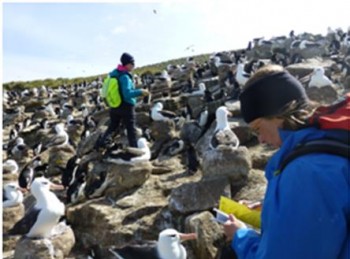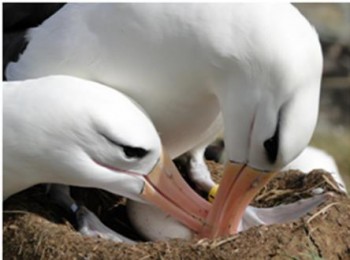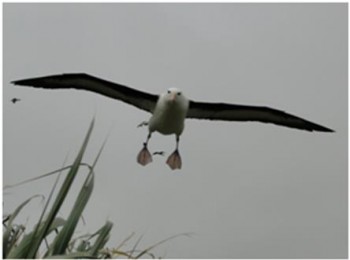Dividing up the (fishy) pie: resource separation among albatrosses and petrels in the South Atlantic
Thomas Bodey (Centre for Ecology and Conservation, University of Exeter, Penryn, UK) and colleagues write in the Journal of Animal Ecology on resource partitioning by selected albatrosses and petrels that occur on Bird Island in the South Atlantic during both summer (breeding) and winter (non-breeding) months.
The paper’s summary follows:
- Interspecific competitive interactions typically result in niche differentiation to alleviate competition through mechanisms including character displacement. However, competition is not the sole constraint on resource partitioning, and its effects are mediated by factors including the environmental context in which species coexist.
- Colonial seabirds provide an excellent opportunity to investigate the importance of competition in shaping realized niche widths because their life histories lead to variation in intra- and interspecific competition across the annual cycle. Dense breeding aggregations result in intense competition for prey in surrounding waters, whereas non-breeding dispersal to larger geographical areas produces lower densities of competitors.
- Bayesian hierarchical models of the isotopic niche, closely aligned to the trophic niche, reveal the degree of segregation between species and functional groups during both time periods. Surprisingly, species explained far more of the variance in the isotopic niche during the non-breeding than the breeding period.
- Our results underline the key role of non-breeding dynamics in alleviating competition and promoting distinctions between species through the facilitation of resource partitioning. Such situations may be common in a diverse range of communities sustained by ephemeral but abundant food items.
- This highlights how consideration of the hierarchical grouping of competitive interactions alongside consideration of abiotic constraints across the complete annual cycle allows a full understanding of the role of competition in driving patterns of character displacement.

Grey-headed Albatross on Bird Island, photograph by Richard Phillips
With thanks to Barry Baker for information.
Reference:
Bodey, T.W., Ward, E.J., Phillips, R.A., McGill, R.A.R. & Bearhop, S. 2014. Species versus guild level differentiation revealed across the annual cycle by isotopic niche examination. Journal of Animal Ecology 83: 470-478.
John Cooper, ACAP Information Officer, 10 March 2014

 English
English  Français
Français  Español
Español 





